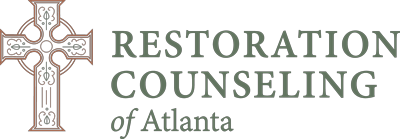With so much recent buzz around attachment styles, I’ve been curious about what you do once you’ve identified whether you fall into the 50% of the population who are insecurely attached or the 50% who are securely attached. Attachment styles are born out of the way we were related to in childhood and have the capacity to change over our lifetime. Below, I’ve outlined three ideas for moving toward secure attachment. But first, let’s ensure we’re all on the same page about Attachment theory and the different attachment styles.
Brief Definition and Overview
Attachment theory explains the fear people may experience when they rely on others in relationships. For a brief history, attachment theory is based on research by John Bowlby and Mary Ainsworth. They discovered that infants who form a close bond with a primary caregiver who is good enough at reading and responding to their cues promptly grow into adults believing that others can be trusted to help them feel safe and supported in the world.
Attachment styles are your basic blueprint for navigating safety and trust in relationships when expressing needs. Because God created us in his image as relational beings, understanding attachment theory and identifying your attachment style is extremely helpful. To learn more, I recommend clicking here for a blog post that explains the theory and styles in depth.
The Attachment Styles
You can easily identify your attachment style through books like Attached and quizzes on websites like The Attachment Project. These tools give us the ability to express our needs, which allows those we are in relationships with to meet them. This theory recognizes secure attachment and three types of insecure attachment styles: anxious-ambivalent or preoccupied, anxious-avoidant, and disorganized.
- Secure attachment style is characterized by people who believe that their needs matter and trust that others will respect and validate their needs in a relationship.
- Anxious preoccupied, or ambivalent attachment style is characterized by people who need more closeness and reassurance due to fear of abandonment. They believe that their needs may not matter or may not be met.
- Anxious-avoidant attachment style is characterized by people who have learned to be independent and self-reliant. They believe others to be unreliable and do not depend on them to meet their needs in a relationship.
- Disorganized attachment style is characterized by those who distrust people and relationships while deeply desiring connection. This attachment style is the result of a primary caregiver posing a threat to them as a child while being the one responsible for meeting their needs.
Becoming Secure
What happens next? After understanding these styles and identifying your tendencies, you begin the gentle and multi-layered process of becoming secure. This ultimately involves relearning how to relate to others. This process does not happen overnight but through continuous awareness and cultivation of healing as you engage in the journey for security.
Three Ways to Become Securely Attached
- Acceptance. Over the past few years, researchers like Brene Brown have encouraged showing our weaknesses and vulnerability to people we are in close relationships with rather than hiding them. This is MUCH easier to preach than to practice. Acceptance begins with awareness of our attachment style and how this manifests in our current relationships. With this awareness, we can accept the thoughts, feelings, and bodily sensations that relational closeness stirs inside us. Then we can allow them to arise and pass with grace and compassion. For example, this can be naming and acknowledging (either out loud to a trusted friend or privately in a journal) the anxiety and fear that arises after someone leaves you on read for several hours.
- Awareness of Language. After acceptance, another way we work towards becoming secure is by noticing the language we use with ourselves. The words we speak to ourselves profoundly impact the way we show up in relationships. Intentionally changing critical words to curious and compassionate ones is a way we engage in this journey of healing. Self-criticism is rarely a helpful way to create healthy and lasting change in our lives.
- Challenging Beliefs. Challenging deeply held beliefs is the next layer of healing. “You’re not enough…” “You’re unwanted…” “You’re unworthy of love…” These can feel like daggers in the gut and be difficult narratives to release because they’ve likely become so familiar that we do not even realize we’re using them. Challenging these beliefs involves graciously acknowledging them, exploring where they come from, and understanding how pervasive they are in our lives.
To Continue Your Healing Journey
Becoming securely attached takes work and develops over time after intentional effort. If this feels daunting, you are not alone. We’re all in process! Thankfully, we have a Savior who is not surprised by this and does not keep his distance from us! God made us, in his image, as relational beings for relationships with others and, ultimately, with him. If you would like to discuss how to grow compassion for yourself, engage in this journey of healing, or anything else from this article, please reach out to me by clicking here.

Written by Samantha Mathews, MA, APC, NCC, CMHC
Woodstock location
samantha@restorationcounselingatl.com
Samantha works with individuals of all ages. She wants to help create space and language for what you may be going through in life. Samantha sees individuals dealing with ADHD, anxiety, depression, gender issues, grief, postpartum depression, and trauma. She also does premarital and marital counseling.

